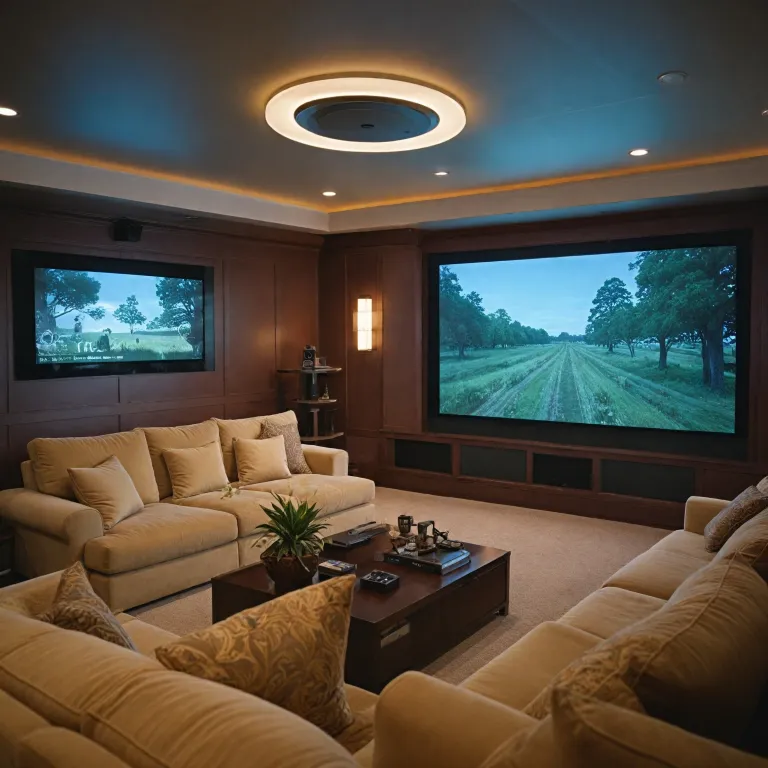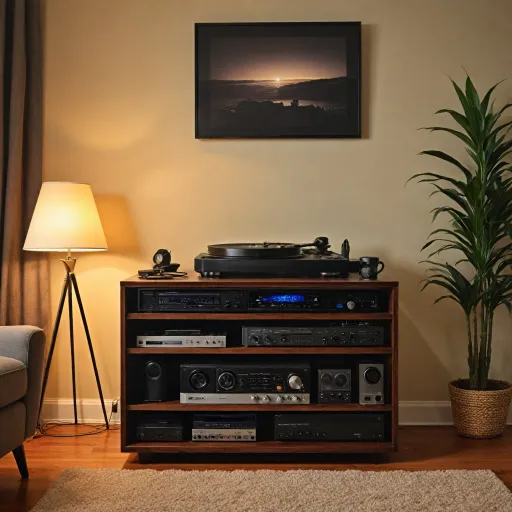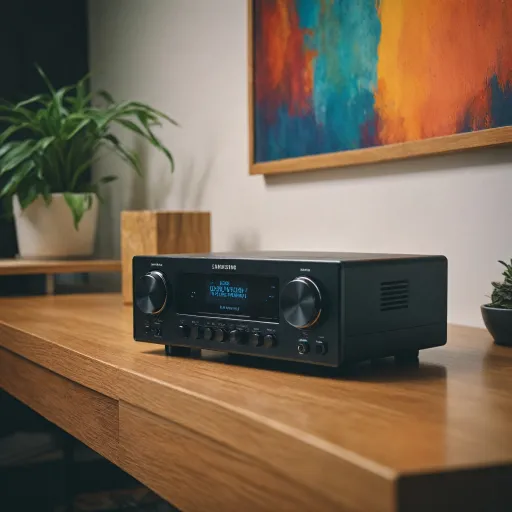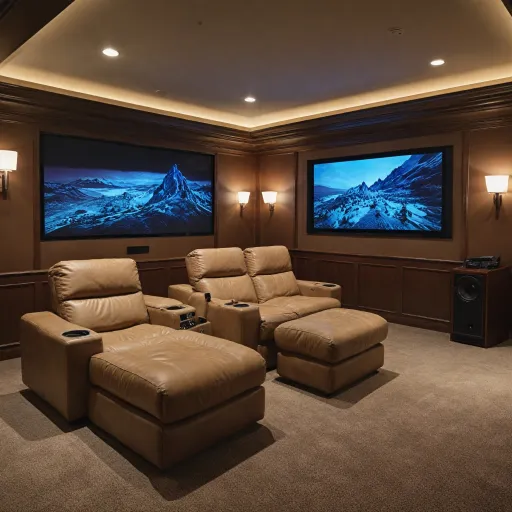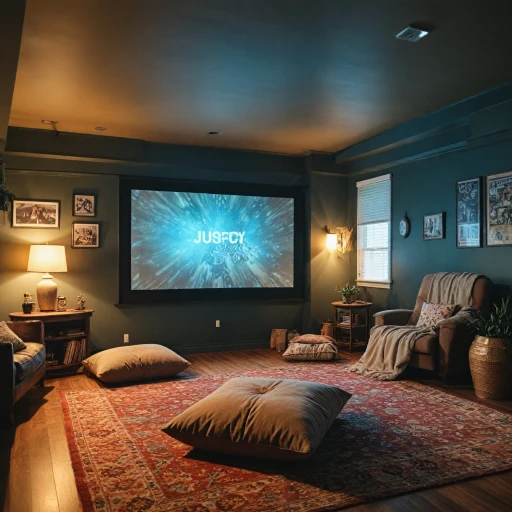
The Basics of HDMI ARC and Optical Connections
Understanding the Fundamentals of HDMI ARC and Optical Audio Connections
When setting up a home theater projector, understanding the different connection types available is essential for optimal performance. HDMI ARC and optical connections serve as fundamental ways to transmit high-quality audio and video signals between devices. Let's break down these two technologies to get a clearer picture. HDMI Cables: One of the most common audio and video formats connectors used today, HDMI (High-Definition Multimedia Interface) cables are prevalent in home theater setups. With the ability to carry both video and audio signals in a single cable, HDMI provides an easy solution for linking devices to your projector. Furthermore, HDMI cables support various audio formats, including Dolby Digital and uncompressed surround sound. HDMI ARC (Audio Return Channel) takes this a step further, enabling two-way communication between devices through a single HDMI cable. This allows for more streamlined audio setups, as you'll discover in other parts of this discussion. Optical Audio Cables: Alternatively, optical cables offer a distinct pathway for transmitting digital audio signals. They work by using light to carry digital audio, ensuring minimal interference and maintaining quality audio output. Optical connections support high-quality sound formats, although they generally do not handle as many audio formats as HDMI cables do. Optical is often considered for its ability to maintain stable audio signals over longer distances, making it an option for sound systems that require consistent quality without degradation. When deciding which cable to choose for your home theater projector, understanding their basics is crucial. HDMI ARC and optical audio connections both have their merits, offering different advantages depending on your specific setup needs. For those looking to delve deeper into how these connections interplay with other equipment, exploring the role of related connection technologies might be beneficial. For instance, HDMI and DisplayPort connections are key components when integrating various audio and video devices into your home theater system.Advantages of HDMI ARC for Home Theater Projectors
Exploring the Perks of HDMI ARC in Home Theater Setups
HDMI ARC (Audio Return Channel) offers a variety of advantages for those looking to optimize their home theater experience. This feature allows for a significant enhancement in both audio and video signals being transmitted between devices such as projectors, sound systems, and televisions.- Streamlined Cables: One of the primary benefits of HDMI ARC is its ability to transmit both audio and video through a single HDMI cable, reducing the clutter of multiple cables around your setup.
- Supported Audio Formats: HDMI ARC supports a range of high-quality digital audio formats, including Dolby Digital, which can deliver an immersive surround sound experience for viewers.
- Seamless Device Integration: With HDMI ARC, you're able to connect compatible devices effortlessly, making it easier to set up and control your home theater system from a single remote. This feature can be particularly advantageous for maintaining audio quality across different devices.
- Uncompressed Audio: Unlike some optical cables, HDMI ARC can support uncompressed surround sound formats such as Dolby Atmos, providing a better audio experience.
Benefits of Optical Connections in Home Theater Setups
Exploring the Role of Optical Connections in Your Home Theater
When it comes to setting up a high-quality home theater system, the type of audio cable you choose can significantly impact the sound quality. Optical connections, while not as frequently discussed as HDMI cables, play a crucial role in ensuring excellent audio transmission.
Optical cables, often referred to as Toslink or SPDIF, are designed to transmit audio signals using light, making them less susceptible to electromagnetic interference. This makes optical audio a dependable option for maintaining clean and crisp sound quality, especially important in densely packed home theater setups filled with cables and devices.
One of the primary benefits of optical connections is their ability to support a range of surround sound formats, including Dolby Digital and DTS. Although optical cables don't support the latest uncompressed formats like Dolby Atmos, they remain a solid choice for systems transmitting standard surround sound.
In terms of compatibility, optical connections work well with various audio devices, like soundbars and AV receivers, that still rely on high-quality digital audio connections. Additionally, they are relatively straightforward to install, offering a simple plug-and-play solution without the configuration complexities sometimes associated with HDMI ARC.
Ultimately, the choice between using HDMI ARC and optical in your home theater hinges on the specific sound requirements and device compatibility. If you’re aiming for an uncompressed surround or more advanced audio formats, the support for Dolby Atmos might sway you toward HDMI. However, for reliable and iInterference-free sound transmission, an optical setup is still an excellent choice.
Comparing Audio Quality: HDMI ARC vs Optical
Audio Quality: A Detailed Comparison
When setting up your home theater projector, the choice between HDMI ARC and optical connections can significantly impact the audio quality. Both options have their merits, but understanding their differences can help you make an informed decision.
HDMI ARC: Superior Audio Formats
HDMI ARC (Audio Return Channel) is known for its ability to transmit high-quality audio signals. It supports uncompressed surround sound formats like Dolby Atmos and Dolby Digital, providing a rich and immersive audio experience. HDMI cables are capable of carrying both audio and video signals, which means fewer cables are needed in your setup. This can be particularly beneficial if you're aiming for a clean and organized home theater environment.
Optical Connections: Reliable and Efficient
Optical audio cables, on the other hand, are renowned for their reliability and efficiency in transmitting digital audio signals. While they may not support the latest audio formats like HDMI ARC, optical cables still deliver excellent sound quality, especially for standard surround sound setups. They are less susceptible to electromagnetic interference, which can be a plus in certain environments.
Which Offers Better Sound Quality?
The choice between HDMI ARC and optical largely depends on your specific needs and the devices in your home theater setup. If your equipment supports advanced audio formats and you desire the highest quality audio, HDMI ARC is likely the better choice. However, if your setup is more straightforward and you prioritize reliability, optical connections can still provide high-quality sound.
Ultimately, both HDMI ARC and optical connections have their place in home theater systems. Consider the audio formats you want to support and the overall setup of your devices to determine which connection will best enhance your viewing experience.
Installation and Compatibility Considerations
Installation Considerations for Choosing the Right Audio Connection
When setting up your home theater projector, understanding the installation requirements for HDMI ARC and optical connections helps you make the best choice for your setup. HDMI Cables and Device Support HDMI cables are typically easier to install, providing a single cable solution that transmits high-quality audio and video signals. Make sure the devices in your setup support HDMI ARC to take full advantage of its capabilities. HDMI ARC requires ARC-compatible ports on both your projector and audio receiver, so check that your equipment has this support before proceeding. Optical Cable Simplicity While not as versatile as HDMI, optical cables offer straightforward installation when your primary concern is high-quality audio. They are particularly useful if your devices support digital audio formats such as Dolby Digital or DTS. However, optical cables do not transmit video signals, so you will need additional cabling for video connections. Compatibility and Signal Transmission For uncompressed surround sound formats like Dolby Atmos, HDMI ARC is generally the better choice. It supports a wide range of audio formats, ensuring quality audio transmission. Keep in mind, some older equipment may not support certain high-definition audio formats over HDMI ARC, so always verify compatibility with your specific audio and video devices. Optical cables, on the other hand, can still offer excellent sound quality for more common surround sound signals but may fall short when transmitting high-demand formats. Evaluating Your Setup Before finalizing your choice between HDMI ARC and optical connections, assess the compatibility and requirements of your current equipment. Consider future-proofing your setup by opting for a connection that supports high audio and video standards, ensuring an optimal experience for years to come. Making an informed decision ensures harmonious installation and maximizes the audio quality your home theater projector can deliver.Choosing the Right Connection for Your Home Theater Projector
Determining the Best Fit for Your Home Theater System
Choosing the right connection for your home theater projector will require considering several factors including audio quality, device compatibility, and future-proofing your setup. Understanding your specific setup and the devices you aim to connect is crucial. Consider the following points:- Device Compatibility: Ensure that your devices support the connection types. If your sound system is designed for HDMI ARC, and your projector supports it, opt for HDMI cables for seamless integration. If your system supports only optical connections, then optical cables are your best bet.
- Audio Quality: HDMI ARC can transmit high-quality, uncompressed surround sound audio formats like Dolby Atmos and Dolby Digital, offering a superior sound experience if your audio receiver supports these formats. Optical audio, while also excellent, typically handles compressed surround sound formats.
- Cabling and Setup: HDMI cables can transmit both audio and video signals, reducing the number of cables needed in your setup. This can simplify your home theater arrangement and minimize cable clutter. Optical cables only carry audio signals, meaning you'll need separate cabling for video.
- Future-Proofing: As home theater technology continuously evolves, investing in HDMI ARC may prove beneficial due to its support for advanced audio signals and compatibility with newer devices.
- Budget Considerations: If you're working within a tight budget and your sound and video quality requirements are moderate, optical connections might suffice, offering decent sound quality at a lower cost.
